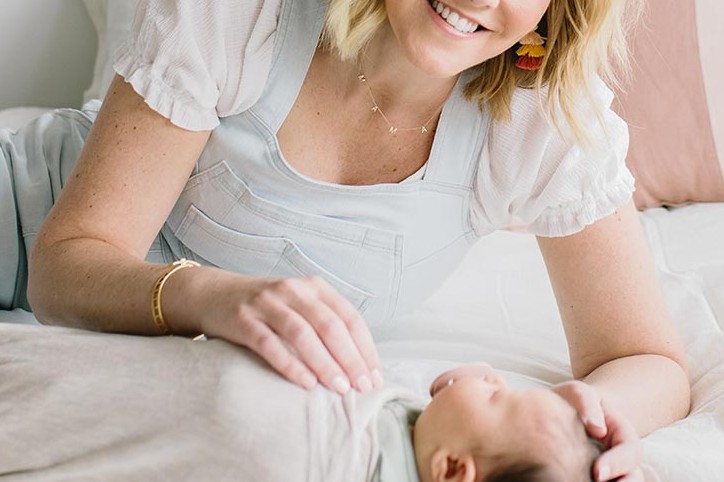Many of us feel like our mom knows everything, but odds are a lot has changed since your mom raised you and that’s particularly true when it comes to safe sleep. The days of stomach sleeping or a bassinet filled with a bumper and blankets are gone and as a result the number of cases of sudden infant death syndrome (SIDS), has dropped dramatically. Continued education is key as there is always new data coming out about how to keep babies safe.
“Sleep for babies should be on a separate, firm, flat surface in a crib, bassinet, or play yard,” says Cara Dumaplin, the founder of Taking Cara Babies. “We want that sleep surface free of any loose bedding or positioning devices (like pillows, loungers, etc.) and baby should be placed on his or her back for the entire first year. I know this can feel overwhelming! That’s why I have a free easy-to-understand Safe Sleep Checklist for parents to double check their baby’s sleep environment.”
Watch out for anything snuggly and soft!
“Items to pay close attention to include the Dockatot, snuggle-me-sleeper, and other ‘nests,’ says Kate Compton Barr, CEO of Pip & Grow. “If you carefully read the packaging on most of these products, they’ll indicate that the product should only be used with parent supervision. That’s a red flag.” The problem is that while the packaging may say they should only be used for “supervised play,” many parents will let their baby sleep in them and that can be very dangerous. That said, swings and baby “docks” are amazing awake time activities that most babies love, so just bear the safety precautions in mind if you plan on using them. Read Ditching Unsafe Sleep Products for more information.
“Another common, but dangerous, product category is the inclined sleeper,” says Barr. “Anything that raises baby’s head up can cause the chin to tip forward and possibly close off an airway. I usually suggest parents try tucking their chins to their chests and taking a few breaths. It’s hard. Then, lift the chin and breathe. Much, much easier. And we have huge airways. Imagine if your airway was smaller than a straw!”
What about a car seat?
We’ve all heard of the baby that won’t sleep anywhere besides the car seat resulting in parents going on 20-minute midnight drives. Unfortunately, the American Academy of Pediatrics (AAP) tells us that the safest places for a baby to sleep are the crib, bassinet or play yard – not in a car seat. “In order to keep baby as safe as possible, they recommend moving baby out of the carseat while sleeping as soon as it’s safe and practical,” says Dumaplin. This is about balancing risk. “It’s more dangerous to drive without a car seat or constantly rubbing your baby on the head so they won’t fall asleep than it is to let them sleep in their car seat while you’re on the go,” says Barr. “But, once you get home, your baby should be transferred out of the car seat and into a flat sleep space. Sleeping in the car seat not only carries a risk of suffocation, but extended use can also cause torticollis (tight, uneven neck muscles) and plagiocephaly (flat head). Read more here: Sleeping Babies in Car Seats.
If you’re reading this and getting more and more anxious – don’t! As mentioned in the beginning, it’s all about education and awareness, both of which can easily be helped.
“Parents really want to keep their babies close to them. I get it. As a result, they’ll choose less safe sleep spaces to do it. Bouncy chairs, boppies, carseats, cuddly sleepers, and, yes, even sleeping on a parent’s chest on the sofa are all suffocation risks for a little baby,” says Barr. “There’s a lot to balance and it’s really hard to make good decisions when you’re exhausted. I always recommend that parents look at their sleep plan during the daytime. Trying to change things up in the middle of the night is a recipe for disaster. This is especially true if you think you might bring your baby into bed with you.”
